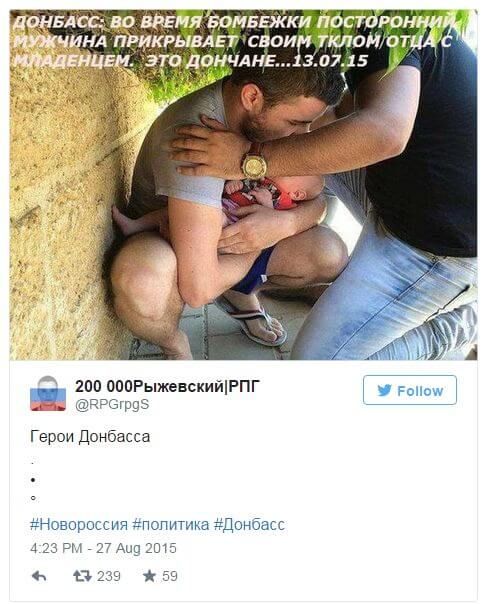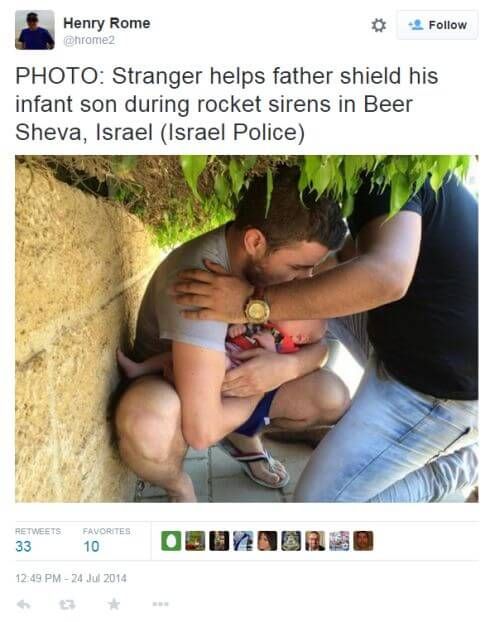For our false photo tweet of the day: Pavel Ryzhevsky, a columnist for the pro-Kremlin Komsomolskaya Pravda tweeted an image purporting to show a civilian shielding his baby from an attack in the separatist-controlled city of Donetsk, in eastern Ukraine. Ryzhevsky dates the image as July 13, 2015.
The Jerusalem Post provides a translation of the words on the image:
“During the bomb attack a father saves a child with his own body. These are Donchane (Donbas people),” Ryzhevsky wrote, according to a translation provided by journalist Shimon Briman, who discovered the appropriated image.
But the photo was not taken in Ukraine, and it wasn’t taken in 2015. Not even close.
This is Eliran Fitusi, an Israeli man in Beer Sheva protecting his baby in the middle of a Palestinian rocket attack during Operation Protective Edge, a year beforehand.
The Post adds:
This was the second time Ryzhevsky reused images from last summer’s Gaza war, said Briman, pointing out an picture of an Israeli woman kneeling over her child that he tweeted last year.
In 2012, a UN worker in the West Bank, Khulood Badawi, lost her job over a false photo tweet featuring a Palestinian child injured in 2006. Also in 2012, BBC reporter Jon Donnison apologized after tweeting a photo of two Syrian children who were misrepresented as Gaza kids injured in an Israeli airstrike. Both were held accountable.
But a Kremlin mouthpiece is, by definition, only answerable to the Kremlin. All readers can do is respectfully register their displeasure on Ryzhevsky’s twitter feed and take his future posts with a huge dose of skepticism, or simply stop following him.
So what’s the takeaway?
While most images on social media are legit, it’s worth being skeptical. Here are some questions to ask yourself before sharing one:
- Who is the original source of this image?
- When was this photo taken? Why is it being shared now?
- Could the photo have been cropped in a way that misrepresents what really happened?
- Any reason to believe the photo was digitally altered?
- If a separate article more fully explains the image, would it be helpful (or perhaps warranted) to share that in a followup tweet?
- Are you completely satisfied that the photo is legitimate enough to share?
You are responsible for the material you share on your social media feeds.
When in doubt, leave it out.
Featured image: CC BY flickr/elisa with additions by HonestReporting



